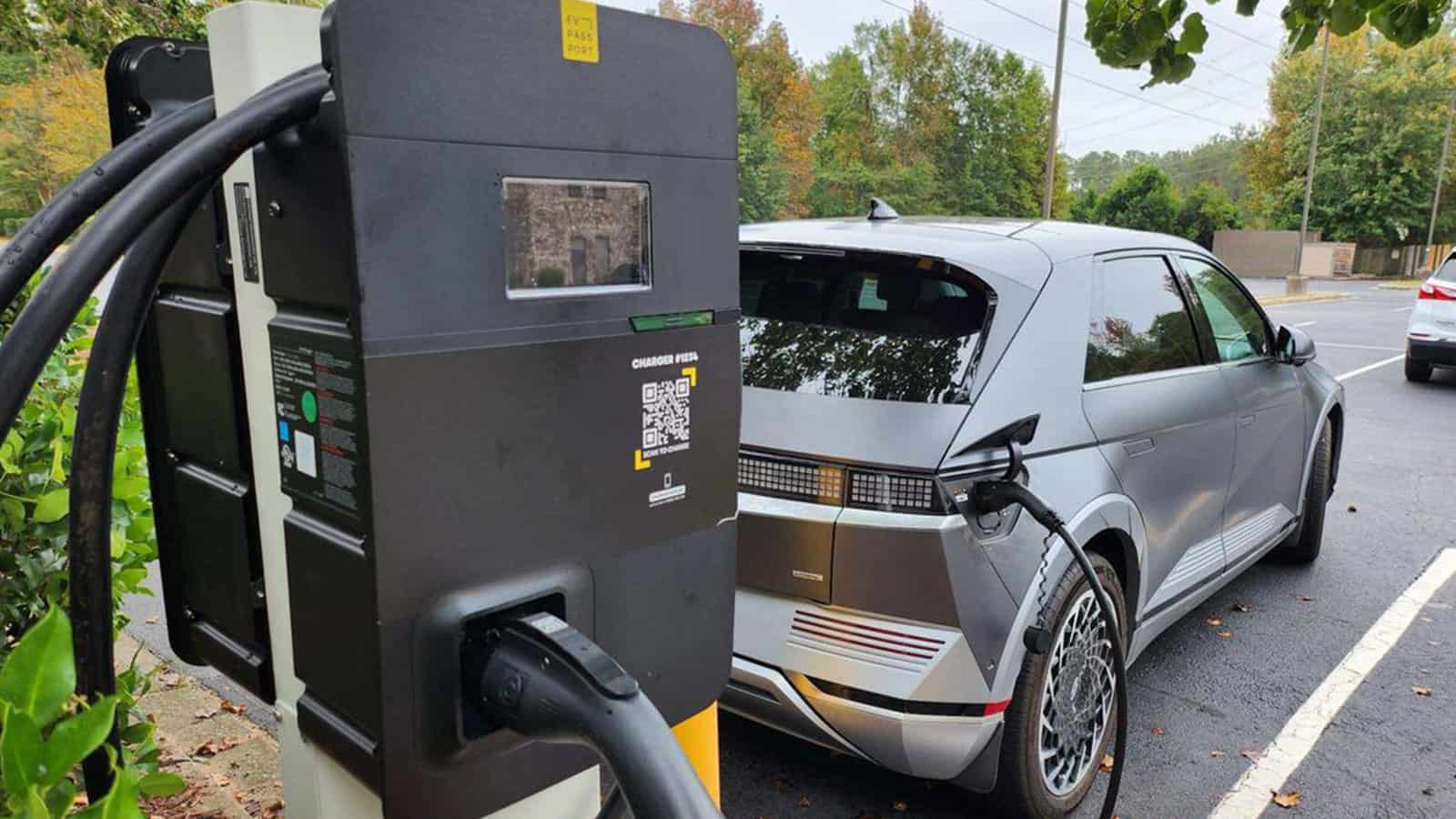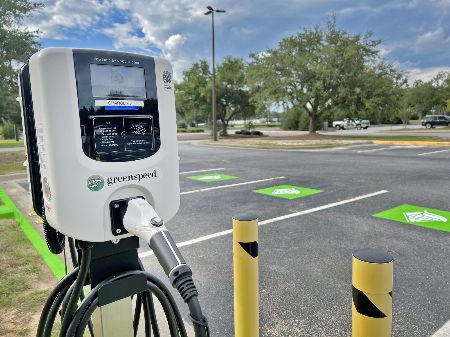New Advancement in EV Charging: Exactly How the Market Is Developing to Satisfy Demand
As the electric vehicle (EV) market remains to increase, the billing facilities is going through significant changes to address the surging need. Secret advancements in ultra-fast charging technologies, paired with clever grid combination, are reshaping the landscape. Furthermore, developments in battery technology assurance boosted effectiveness and sustainability. Nevertheless, the pursuit of global charging criteria stays a vital consider enabling smooth individual experiences and prevalent adoption. The implications of these improvements raise vital questions regarding the future of EV charging and its function in the more comprehensive energy ecological community.
Development of Charging Infrastructure
The fast development of electric car (EV) billing framework is a vital element in promoting the extensive adoption of electric wheelchair. As federal governments, private companies, and consumers progressively identify the relevance of reducing carbon emissions, investments in billing networks have actually risen. This framework development is vital to reduce variety stress and anxiety, making certain that EV users have convenient access to billing terminals.
Substantial innovations in billing station innovation and deployment strategies have actually arised. Urban locations are seeing an expansion of public charging stations, while country regions are progressively being integrated into the billing network. Collaborations in between automobile producers and billing carriers are coming to be much more common, promoting the facility of extensive networks that boost individual experience and access.
On top of that, the combination of renewable resource sources right into charging terminals is getting momentum, advertising sustainability in the EV community. This change not only sustains ecological objectives however also straightens with the rising need for green power solutions amongst consumers.
Ultra-Fast Charging Technologies
Ultra-fast charging modern technologies represent a substantial leap ahead in the EV charging landscape, allowing electrical cars to reenergize in a fraction of the moment contrasted to conventional billing methods. These technologies usually deliver power levels surpassing 150 kW, with some systems rising to 350 kW or more, substantially decreasing billing times to as low as 15-30 mins for a significant fee.
Trick enabling innovations consist of advancements in battery chemistry, power electronics, and thermal administration systems. As an example, high-capacity batteries with boosted thermal stability enable faster billing without overheating. In addition, developments in charging facilities, such as liquid-cooled cables and modular charging stations, assist in reliable power transfer, boosting the overall user experience
Major vehicle makers and modern technology firms are actively investing in ultra-fast charging networks, recognizing the important duty they play in overcoming range anxiety and speeding up the adoption of electric cars. As these innovations end up being a lot more commonly offered, the EV market is anticipated to witness considerable growth, making electric mobility a more attractive option for consumers. Overall, ultra-fast charging technologies are pivotal in shaping the future of lasting transport, leading the way for a much more efficient and considerable billing environment.
Smart Grid Combination

With demand reaction methods, wise grid systems can change charging schedules based on grid conditions and electricity pricing. Throughout periods of high demand, billing can be delayed to off-peak hours, resulting in reduced prices for customers and decreased strain on the grid. Additionally, vehicle-to-grid (V2G) technologies make it possible for EVs to discharge energy back into the grid, enhancing and supplying secondary services grid stability.
Assimilation with eco-friendly energy sources better enhances the sustainability of EV charging. By straightening billing activities with periods of high solar or wind generation, wise grids promote a greener billing infrastructure. Eventually, clever grid assimilation not just supports the growing demand for EVs but also adds to a much more lasting and resistant power future, positioning the industry for lasting success.
Battery Advancements
Amidst the rapid advancement of electrical automobiles (EVs), battery technologies stand at the center, driving advancements in sustainability, performance, and efficiency. As the need for EVs rises, producers and scientists are focusing on enhancing battery innovations to resolve challenges such as range stress and anxiety and billing times.
Lithium-ion batteries remain the most extensively made use of innovation, yet new products and chemistries are emerging to enhance energy density and long life. Solid-state batteries, as an example, assure greater power storage capacity and enhanced safety by changing liquid electrolytes with solid ones. This change can dramatically lower the threat of find out here fire and boost the life expectancy of batteries.
Additionally, innovations in battery reusing procedures are essential for sustainability. Business are developing techniques to recover important materials like lithium, cobalt, and nickel from utilized batteries, advertising a circular economy and minimizing environmental impact.

Global Charging Criteria

Initiatives are underway to develop international charging standards that help with compatibility among different EV designs and billing terminals. Organizations such as the International Electrotechnical Payment (IEC) and the Culture of Automotive Engineers (SAE) are functioning collaboratively with automotive manufacturers and energy suppliers to develop thorough standards. EV Charging news. These criteria purpose to streamline the billing procedure, decrease the need for multiple adapters, and enhance user experience
Moreover, standardization can considerably reinforce the growth of the charging network, as it encourages investment by making framework growth much more predictable and reliable. As the EV market develops, a unified strategy to billing requirements will certainly be essential for making certain that customers can bill their lorries easily and accurately, thus sustaining the broader shift to sustainable transport.
Final Thought
The electrical automobile charging sector is undertaking considerable transformation to attend to the rising need for lasting transportation. Developments in billing facilities, ultra-fast technologies, smart grid assimilation, and ingenious battery services are crucial in improving user experience and functional effectiveness. The search of worldwide billing requirements is critical for making sure interoperability across various areas and systems. Collectively, these growths position the sector to support a wider adoption of electric automobiles, eventually adding to an extra sustainable future.
Urban locations are seeing a proliferation of public charging terminals, while country regions are gradually being incorporated into the charging network. Additionally, developments in charging facilities, such as liquid-cooled cords and modular charging stations, help with reliable power transfer, improving the overall customer experience.
Overall, ultra-fast charging technologies are critical in shaping the future of lasting transport, leading the means for a more reliable and substantial billing ecological community. - EV Charging news
By lining up charging activities with periods of high solar or wind generation, smart grids advertise a greener billing framework.Initiatives are underway to develop worldwide billing criteria that promote compatibility amongst different EV models and charging stations.